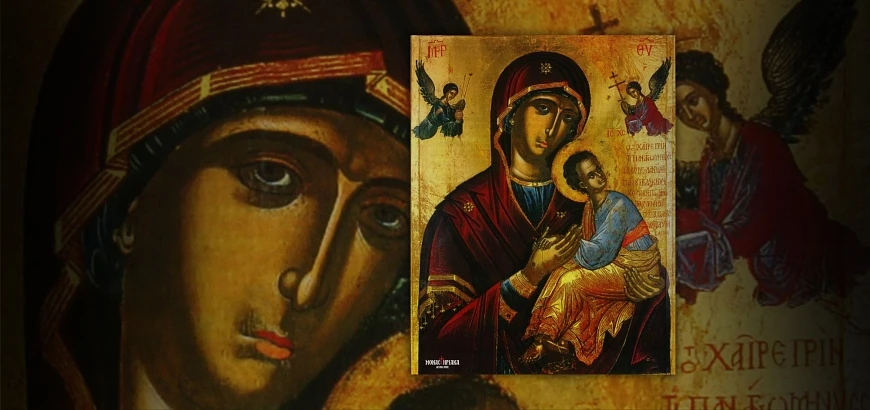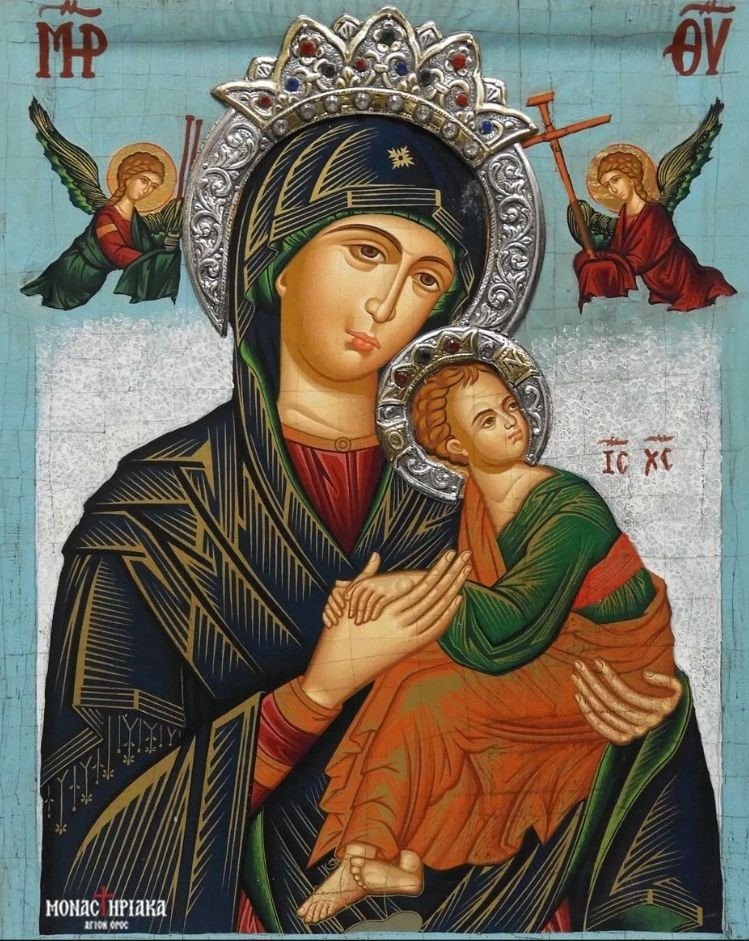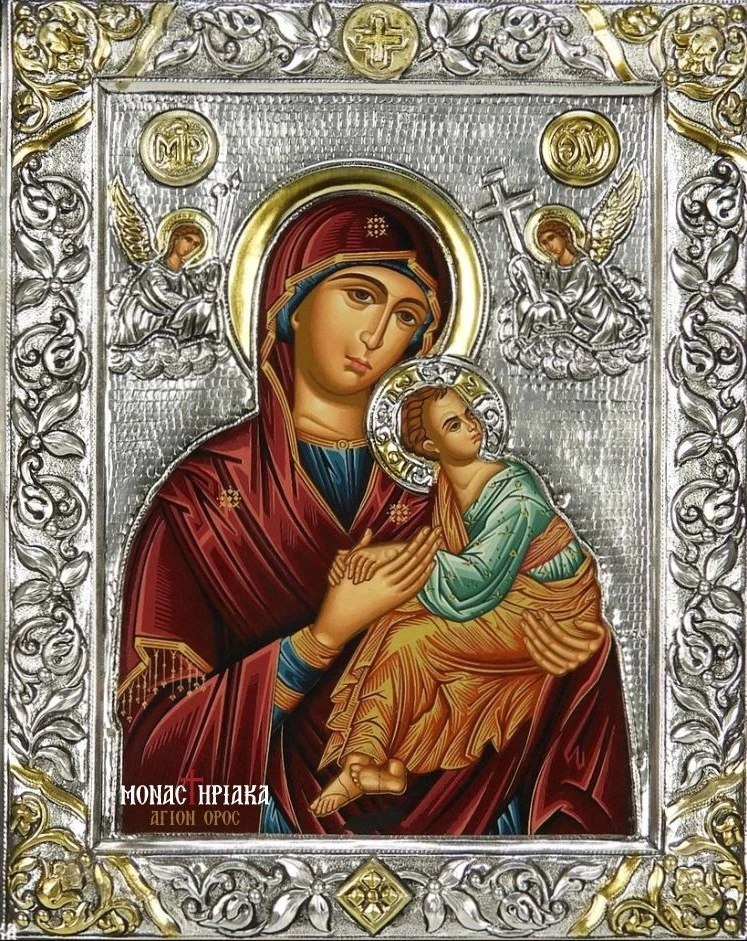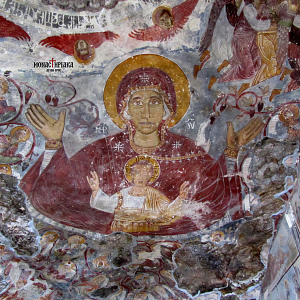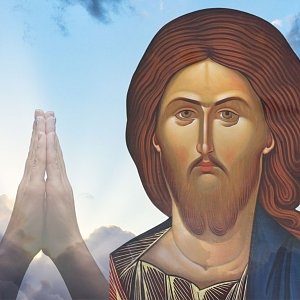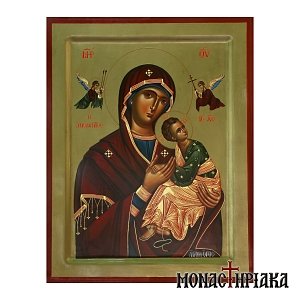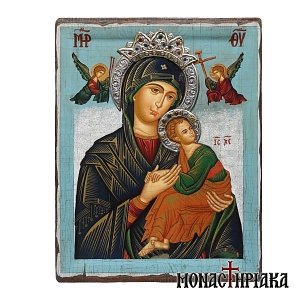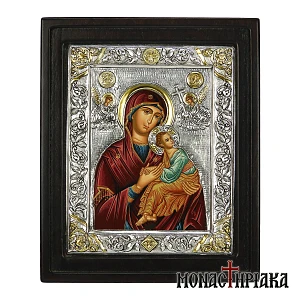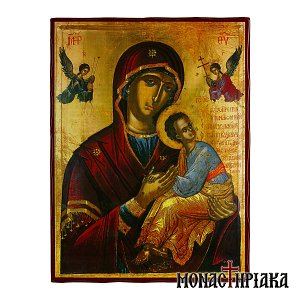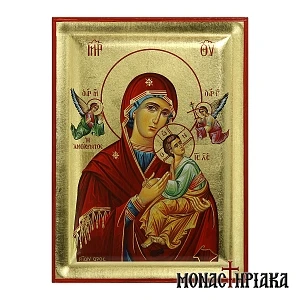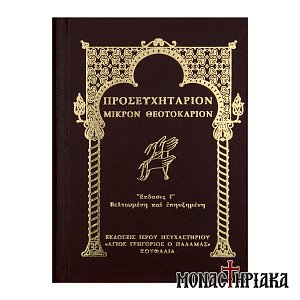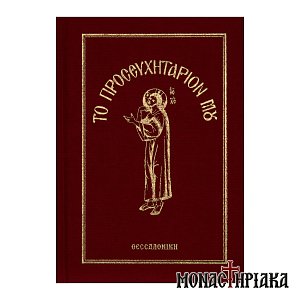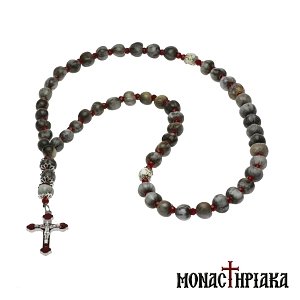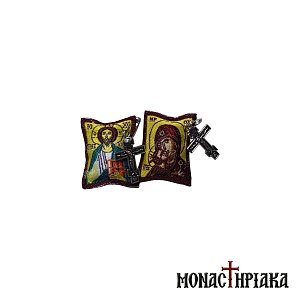The origin of the name of the Virgin Mary
The name of the Virgin Mary, ‘Immaculate’, in Greek ‘Amolyntos’, originates from the hymn of the Compline "Spotless, undefiled, immaculate, unstained, pure Virgin, Lady..." composed by Monk Paul of the Holy Monastery of Evergetis in Constantinople.
The Virgin Mary is also called "Our Lady of Passion" as she holds Jesus Christ in her arms and the Archangels, Gabriel and Michael, stand on both sides bearing the symbols of the Passion: the Cross, the Lance and the Sponge.
Find here: Ιcons with the Virgin Mary of Passion.
What the icon of the Virgin Mary of Passion depicts
Our Lady of Passion holds Jesus Christ on her left side, with her left hand supporting His bare and kneeling feet.
The two Archangels with the symbols of the Passion
Jesus Christ holds tightly His mother's hand with both of His hands, gazing towards the Archangel Gabriel. The Archangel Gabriel reveals the main symbols of the Passion: the Cross of His future sacrifice and the Crown of His persiflage.
Above the shoulder of the Virgin Mary, the Archangel Michael is depicted holding the Lance, the Sponge, and the Vessel containing gall and vinegar.
Find here: Orthodox Icons with Virgin Mary of Passion
The inscription from the 15th century
In the holy icon of Our Lady of Passion, beneath the Archangel Michael, the title "Amolyntos" is depicted, while beneath the Archangel Gabriel, the inscription from the mid-15th century is noted.
“Ο ΤΟ ΧΑΙΡΕ ΠΡΙΝ ΤΗ ΠΑΝΑΓΝΩ ΜΗΝΥΣΑΣ ΣΥΜΒΟΛΑ ΝΥΝ ΤΟΥ ΠΑΘΟΥΣ ΠΡΟΔΕΙΚΝΥΗ - ΧΡΙΣΤΟΣ ΔΕ ΘΝΗΤΗΝ ΣΑΡΚΑ ΕΝΔΕΔΥΜΕΝΟΣ ΠΟΤΜΟΝ ΔΕΔΟΙΚΟΣ ΔΕΙΛΙΑ ΤΑΥΤΑ ΒΛΕΠΩΝ”.
Who is the creator of the icon
It is worth noting that the original icon of Our Lady of Passion is attributed to the great Cretan painter of the 15th century, Andreas Ritzos. The works of Andreas Ritzos are displayed both in Italy and on the island of Patmos in Greece.
Where the icon of Our Lady of Passion is located
Today, the icon of Our Lady of Passion is exhibited at the Byzantine Museum in Athens.
Find here: Hand Painted Byzantine Icon from Mount Athos with the Virgin Mary of Passion.
